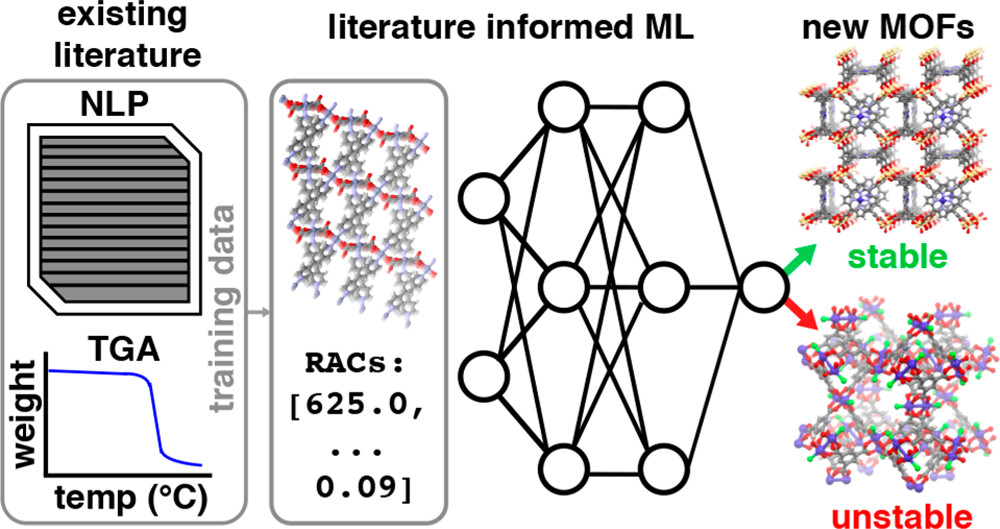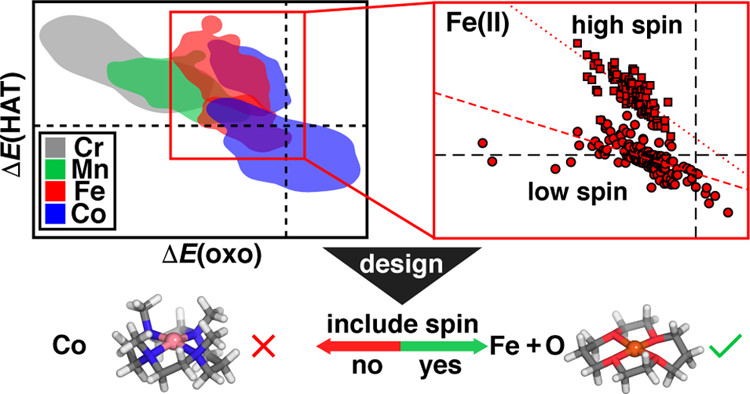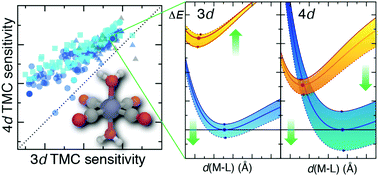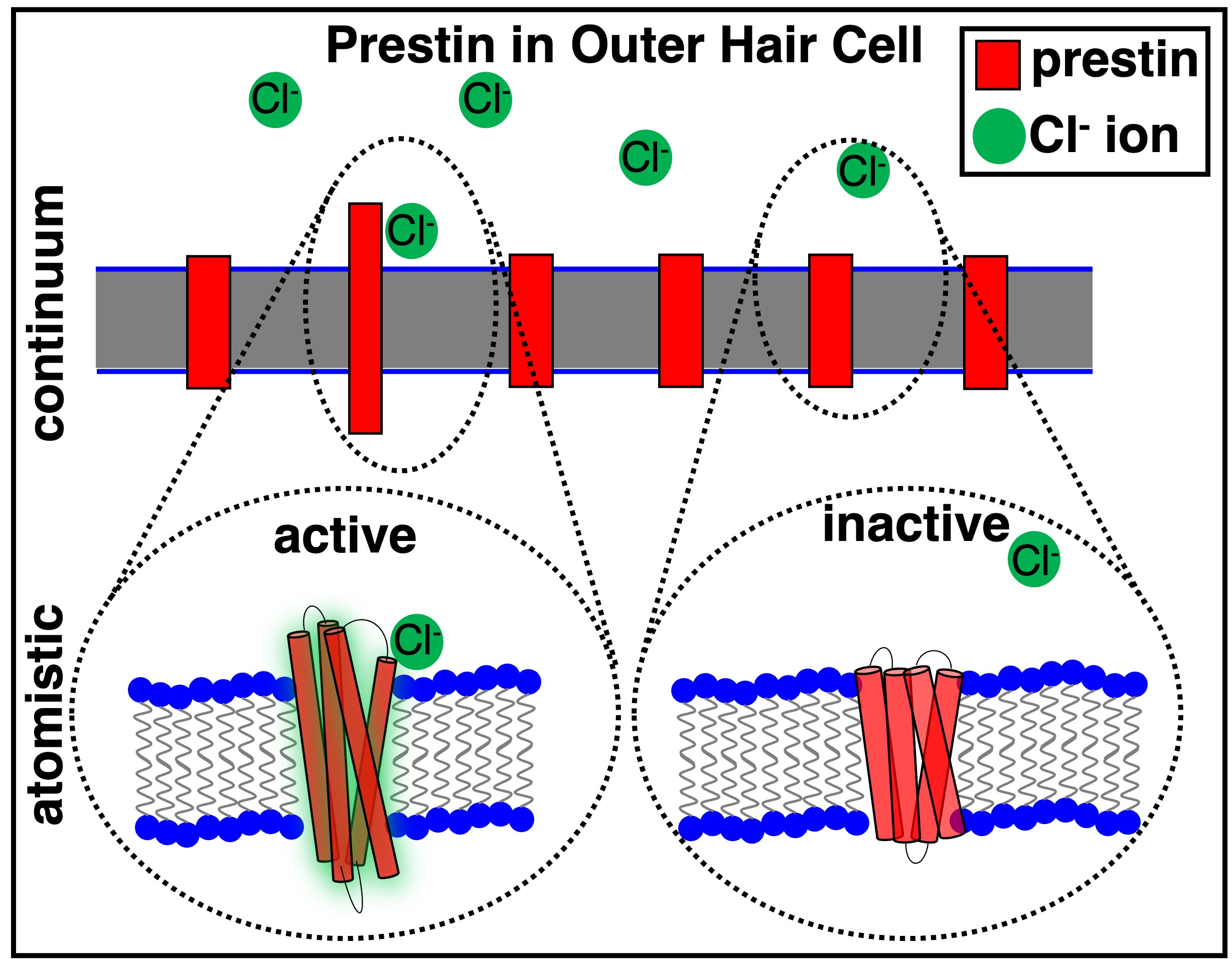Research
As with any new research group, our interests and directions are being actively formed. We are broadly interested in understanding how microscopic behavior governs behavior at the mesoscale for soft and hard materials. A unifying theme is elucidating the role of transition metals in these processes. We are interested in transition-metal-related problems in both materials and biological systems. Current active research topics of interest (in no particular order) include:
- Comparing transmembrane transporter proteins to gather insights on metal transport selectivity
- Understanding how transmembrane voltage sensing dyes work and how to make them better
- Quantifying fitness landscapes for biomolecules and informing future searches with them
- Characterizing through-space/through-bond interactions in molecular catalysts and porous materials
- Benchmarking computational methods with experimental data on materials systems
- Utilizing physics and data-driven tools to study vesicle shapes and sizes
- Minimal models of membrane proteins that alter membrane mechanics
Methods and Student Training
Students in the group will learn a variety of techniques, including but not limited to density functional theory [DFT], wavefunction theory [WFT], molecular dynamics [MD], Monte Carlo [MC], and continuum modeling. Students will gain proficiency in using high performance computing [HPC] resources, and when necessary, will also use and develop machine learning [ML] tools for chemical problems. Students will also gain expertise in collaborative software development.
Although we are a computational group in nature, it is essential that students think about the ‘testability’ of their hypotheses, speak with experimental groups, and communicate their work to others both inside and outside of the group. Aside from technical skills, all students will gain expertise in project management, teaching others, collaboration, and presenting their work to broad audiences.
I take a ‘hands on’ approach in mentoring students. Students can expect to meet me at least weekly to develop ideas, overcome challenges, and roadmap projects. We are ‘question driven’ rather than ‘method driven.’ I also care deeply about student development and outcomes. I will do my best to provide you with the resources to succeed during your degree and in your career. I prefer students to interact with me and other colleagues on a regular basis in the office.
Prior Research
My prior work colors the future research in the group. I have worked on the following topics (representative publications linked):
Learning from Literature Data
 Literature scraping and cheminformatics uncovered rules to improve metal-organic framework (MOF) stability. Our data-driven models provide a way to suggest changes on MOF structures to improve stability. Using similar approaches, we studied redox potentials in bimetallic complexes, labeled spin states of spin crossover transition metal complexes, and suggested transition metal complexes to repurpose for new applications.
Literature scraping and cheminformatics uncovered rules to improve metal-organic framework (MOF) stability. Our data-driven models provide a way to suggest changes on MOF structures to improve stability. Using similar approaches, we studied redox potentials in bimetallic complexes, labeled spin states of spin crossover transition metal complexes, and suggested transition metal complexes to repurpose for new applications.
Deciphering Light Alkane Oxidation Reactivity
 Strategies to utilize scaling relations for the prediction of individual reaction energies or the energies of multiple steps on the reaction energy landscape of light alkane oxidation break down due to spin and oxidation state variability. Broken empirical scaling relations are possible to harness for improved molecular design.
Strategies to utilize scaling relations for the prediction of individual reaction energies or the energies of multiple steps on the reaction energy landscape of light alkane oxidation break down due to spin and oxidation state variability. Broken empirical scaling relations are possible to harness for improved molecular design.
Method Sensitivity in Density Functional Theory (DFT)
 Within DFT, Density Functional Approximation (DFA) choice leads to variation in property prediction. Global hybrid functionals utilize the Hartree-Fock exchange fraction as a tunable parameter. Transition metal complexes that vary only in their metal have different sensitivity to this parameter. Additionally, different steps of a reaction energy landscape for light alkane oxidation are differently DFA sensitive.
Within DFT, Density Functional Approximation (DFA) choice leads to variation in property prediction. Global hybrid functionals utilize the Hartree-Fock exchange fraction as a tunable parameter. Transition metal complexes that vary only in their metal have different sensitivity to this parameter. Additionally, different steps of a reaction energy landscape for light alkane oxidation are differently DFA sensitive.
Multiscale Modeling from the Microscopic to Mesoscopic Scales
 Within the inner ear of mammals, the cochlea acts as a “squishy Fourier transformer” that turns mechanical sound waves into electrical impulses that are sensed by the brain. Within the cochlea, the outer hair cell reacts to the sound and processes the signal. There is a piezoelectric protein, named prestin, that changes conformation and is responsible for the electromotile response of the outer hair cell. We focused on deciphering the role of prestin in governing outer hair cell motion. Microscopic motions of prestin are bridged to mesoscopic motions of the outer hair cell that are too large to study with atomistic detail.
Within the inner ear of mammals, the cochlea acts as a “squishy Fourier transformer” that turns mechanical sound waves into electrical impulses that are sensed by the brain. Within the cochlea, the outer hair cell reacts to the sound and processes the signal. There is a piezoelectric protein, named prestin, that changes conformation and is responsible for the electromotile response of the outer hair cell. We focused on deciphering the role of prestin in governing outer hair cell motion. Microscopic motions of prestin are bridged to mesoscopic motions of the outer hair cell that are too large to study with atomistic detail.